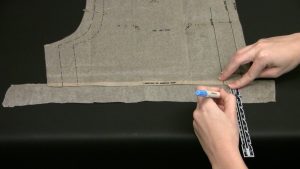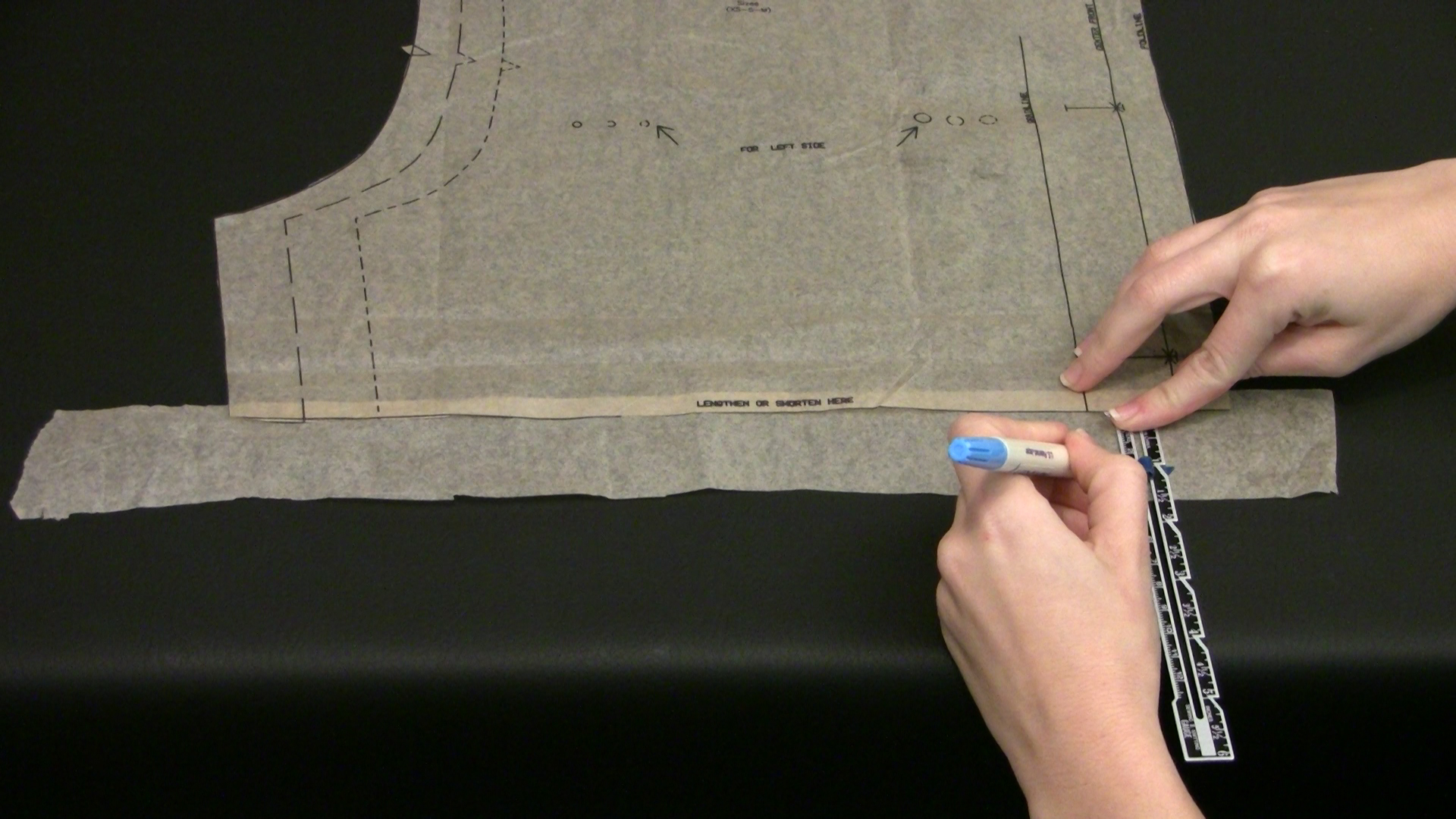 Lengthening or shortening a commercial pattern is actually quite easy to do and necessary if you tend to find that patterns are generally too short or too long for you. As a petite person myself, I tend to find everything too long for me, especially pants. Going shopping for clothes is just a constant reminder that yes, I am short. Luckily though, when I sew, I can live out my delusion that I'm perfect and everyone else is just too tall. The other nice thing about my stature is that I need less fabric, which saves me money. That's the nice thing about sewing your own clothes. Everything is customized to you so that it fits you perfectly and you don't have to worry about rolling up your pantlegs all the time.
Lengthening or shortening a commercial pattern is actually quite easy to do and necessary if you tend to find that patterns are generally too short or too long for you. As a petite person myself, I tend to find everything too long for me, especially pants. Going shopping for clothes is just a constant reminder that yes, I am short. Luckily though, when I sew, I can live out my delusion that I'm perfect and everyone else is just too tall. The other nice thing about my stature is that I need less fabric, which saves me money. That's the nice thing about sewing your own clothes. Everything is customized to you so that it fits you perfectly and you don't have to worry about rolling up your pantlegs all the time.
The pattern companies know that not everyone is the same and have, therefore, conveniently placed lines on patterns indicating where it will be the easiest to shorten or the lengthen and still be able to maintain the integrity of the pattern. By using these lines you can length or shorten before you cut out your fabric, thereby saving yourself a lot of trouble later in your project. Not only does this apply to pant legs but also to commercial tops where you can sometimes lengthen or shorten the torso area. If there are no marked lines for shortening or lengthening, just shorten or lengthen your pattern piece at the bottom of the pattern. Be sure to maintain the integrity of the pattern shape.
After you get the hang of sewing, you'll learn what works best for you and feel comfortable altering your own patterns so that everything fits you perfectly.



Are you using the pivot and slide method to lengthen or shorten the hem?
eek! you are correct, it does it get doubled. So for an inch, fold it up a half inch. We’ll add a correction to the video. thanks!
Maybe I’m confused, but by measuring an inch of folded paper when shortening the pattern piece, did you not actually shorten by TWO inches? (Because the folded part is doubled)
Just so I know I am doing this correctly, this same method would be used regardless of how much you are actually lengthening the pattern, correct? I am 6 feet tall and I have a pattern I would need to add about 5 inches to on a bodice. The lengthen line is located right below the bust. Once I add my needed length the cut lines are significantly different (like a 1/2 inch from the bottom of the curve of the bust to the now much lower cut line for the rest of the bodice). Do I just draw a line between the two and call it good?? Thanks for your advice – I am new to sewing and am trying to make a wedding dress (ugh!).
Yes, if you length above the bottom of the crotch curve, it’ll definitely after the crotch length and depth. If you just want to lengthen the pants, I would lengthen at the hemline or at least below the crotch line.
Does crotch lengthening/shorten affect crotch depth? Are they the same thing? I lengthened a trouser pattern at the hip and crotch had to be scooped after I’d sewn it up. I’d really appreciate some definitive advice! Thanks in advance!
No, it’s below the hip. You can do the same concept though by slicing through at the straightest part of the crotch curve which would be nearer to the waistline and then spreading the pieces apart for as much as you want to. I’ll add your request to my list though for extending the crotch length.
Hi professor,
Before I subscribe to your premium videos to view this tutorial, I just need to ask.
Will this video outline how to lenghten a commercial trouser pattern piece between the hip and the waist area.
I ask becuase I need more room in that area and not at the bottom of the patern piece were the adjustment is usually made.
You just blend the lines so that one gradually goes into the other line. If for example the top is in a little more in than the bottom, you start cutting with the top line but, as you approach the wider line, you gradually veer towards the wider line so that the edge of your pattern ends up with a smooth continuous line.
I just want to know what to do with the cut lines when I shorten a dress pattern. Do I follow the upper part or the lower part of the cut lines when they don’t match up after I have folded the pattern paper to shorten? Or, after I cut the bottom hemline should I unfold the paper and just follow the original cut line to the new shorter bottom? Thank you.